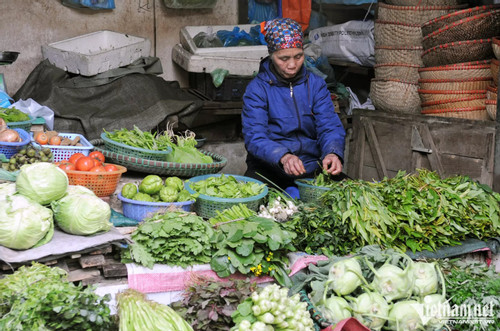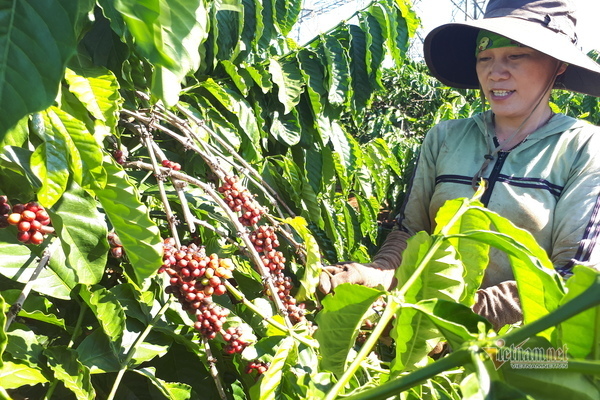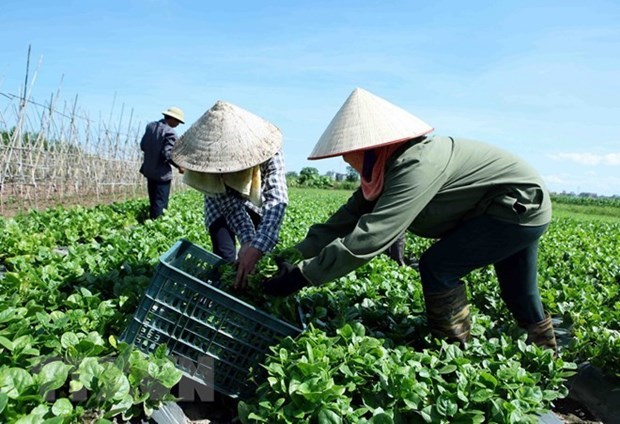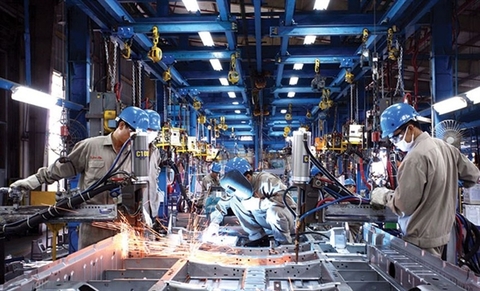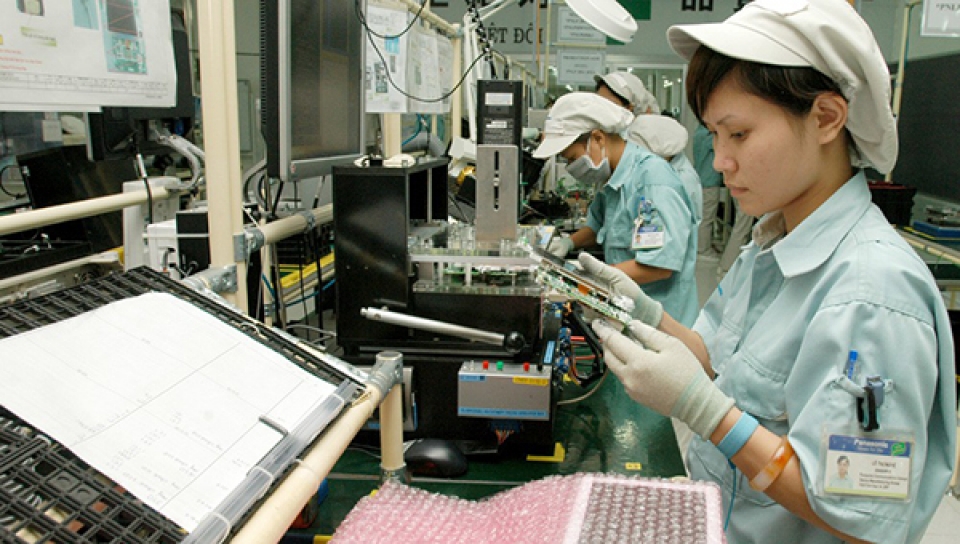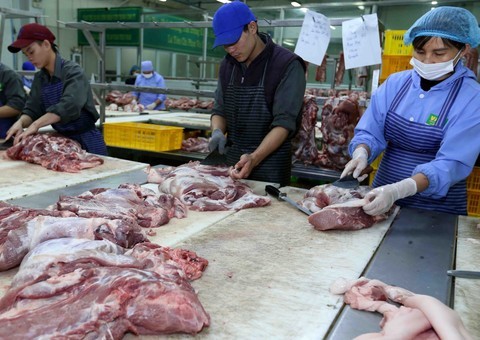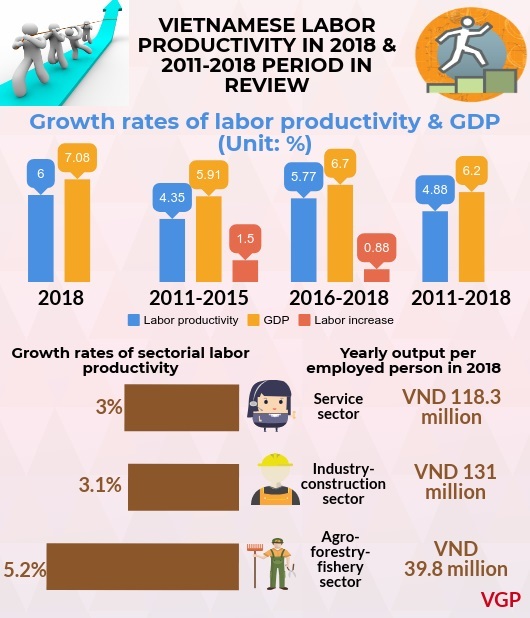- © Copyright of Vietnamnet Global.
- Tel: 024 3772 7988 Fax: (024) 37722734
- Email: evnn@vietnamnet.vn
GSO
Update news GSO
Though petrol prices have fallen, food prices have remained high
Contrary to all predictions, food prices have remained high despite the sharp fall of gasoline prices.
Firms should facilitate Gen Z to develop
Enterprises should consider applying new thoughts or amend regulations to meet the demand of Gen Z, including those born in 1996-2010, and create favorable conditions for them to develop as they will be an important part of the country’s workforce.
GSO leader hails 2020 as year of success in inflation control
Director General of the General Statistics Office (GSO) Nguyen Thi Huong has stressed that 2020 is considered a year of success in inflation control.
GSO recalculation of provinces' GRDP provides truer picture of local development
A problem existed for years between the difference of GRDP (gross regional domestic product) reported by local statistics offices and GDP calculated by the General Statistics Office (GSO).
Vietnam: the rare economy that still grew during Covid-19 pandemic
Vietnam’s GDP grew by 2.12 percent in the first nine months of the year compared with the same period last year, the lowest growth rate since 2011, according to the General Statistics Offic.
Mid-term rural, agricultural survey to begin on July 1
A mid-term survey on rural areas and agriculture will be carried out in Vietnam’s 63 cities and provinces from July 1, the General Statistics Office (GSO) has announced.
Close to 5 million local workers affected by COVID-19 pandemic
 The novel coronavirus pandemic has caused approximately 5 million workers to either lose their jobs or stop work until further notice, therefore bringing the number of employed people during Q1 to a ten-year record low.
The novel coronavirus pandemic has caused approximately 5 million workers to either lose their jobs or stop work until further notice, therefore bringing the number of employed people during Q1 to a ten-year record low.
Disbursement of public investment would help lift Vietnam's GDP by 0.42 percentage points
 Boosting the disbursement of all planned public investment would help increase this year’s gross domestic product (GDP) by 0.42 percentage points, according to the General Statistics Office (GSO).
Boosting the disbursement of all planned public investment would help increase this year’s gross domestic product (GDP) by 0.42 percentage points, according to the General Statistics Office (GSO).
Vietnam manufacturing, processing industry drives economic growth
 The manufacturing and processing industry drove economic growth in 2019 with production volume increasing 11.29 per cent over the previous year.
The manufacturing and processing industry drove economic growth in 2019 with production volume increasing 11.29 per cent over the previous year.
Vietnam sees positive labour growth in 2019
 The Vietnamese workforce reached 55.8 million last year, and increase of 417,100 compared to 2018, reported the General Statistics Office.
The Vietnamese workforce reached 55.8 million last year, and increase of 417,100 compared to 2018, reported the General Statistics Office.
Vietnam’s 2019 trade surplus hits four-year record
 The country’s trade surplus reached a record high of US$9.9 billion in 2019, the General Statistics Office’s monthly report has revealed.
The country’s trade surplus reached a record high of US$9.9 billion in 2019, the General Statistics Office’s monthly report has revealed.
Vietnam 2017 GDP expands US$56 billion after revision
 After revision, Vietnam’s GDP grew an average of 25.4% annually in the 2010 – 2017 period, in which 2011 recorded the highest growth rate of 27.3%.
After revision, Vietnam’s GDP grew an average of 25.4% annually in the 2010 – 2017 period, in which 2011 recorded the highest growth rate of 27.3%.
Average registered capital rises in first 11 months
 More than 126,700 new enterprises were formed in the first 11 months of this year with total capital of VND1.574 quadrillion (US$65.6 billion), reported the General Statistics Office (GSO).
More than 126,700 new enterprises were formed in the first 11 months of this year with total capital of VND1.574 quadrillion (US$65.6 billion), reported the General Statistics Office (GSO).
Vietnam's inflation controllable despite soaring pork prices
 This years inflation is controllable at 3.3-3.9 per cent, Deputy Prime Minister Vuong Dinh Hue said while chairing a meeting early this week regarding the recent surge in pork prices, an essential foodstuff.
This years inflation is controllable at 3.3-3.9 per cent, Deputy Prime Minister Vuong Dinh Hue said while chairing a meeting early this week regarding the recent surge in pork prices, an essential foodstuff.
Personal income tax rates out of date, need amending
 The Ministry of Finance (MOF) says that personal income tax (PIT) rates have become out of date after six years of application and need amendment.
The Ministry of Finance (MOF) says that personal income tax (PIT) rates have become out of date after six years of application and need amendment.
Vietnam’s GDP per capita is $3,000 per annum
 Vietnamese income has improved significantly, but it has not reached the $3,000per capita threshold as calculated by General Statistics Office, economists say.
Vietnamese income has improved significantly, but it has not reached the $3,000per capita threshold as calculated by General Statistics Office, economists say.
Productivity of private sector ranks lowest: report
 The state-owned economic sector ranks first in terms of productivity, followed by foreign invested companies. The productivity of the private sector is the lowest.
The state-owned economic sector ranks first in terms of productivity, followed by foreign invested companies. The productivity of the private sector is the lowest.
VN labor productivity witnesses high growth pace in the region
 Labor productivity is a decisive factor for competitiveness of every economy and enterprise especially a developing country like Viet Nam.
Labor productivity is a decisive factor for competitiveness of every economy and enterprise especially a developing country like Viet Nam.
Vietnam remains sanguine about prospects for trade in second half
 Domestic businesses should stay alert and be proactive in finding new advantages while improving their competitiveness in order to seize opportunities to boost exports in the remaining months of the year amid the escalating US-China trade tensions.
Domestic businesses should stay alert and be proactive in finding new advantages while improving their competitiveness in order to seize opportunities to boost exports in the remaining months of the year amid the escalating US-China trade tensions.
Vietnam’s growth to remain under pressure in 2019
 Fitch Solutions maintains its forecast that Vietnam’s real GDP growth will come in at 6.5% in 2019, a fall from 7.1% in 2018, partly due to unfavourable base effects potentially occurring in the remainder of 2019 and slowing global demand.
Fitch Solutions maintains its forecast that Vietnam’s real GDP growth will come in at 6.5% in 2019, a fall from 7.1% in 2018, partly due to unfavourable base effects potentially occurring in the remainder of 2019 and slowing global demand.
